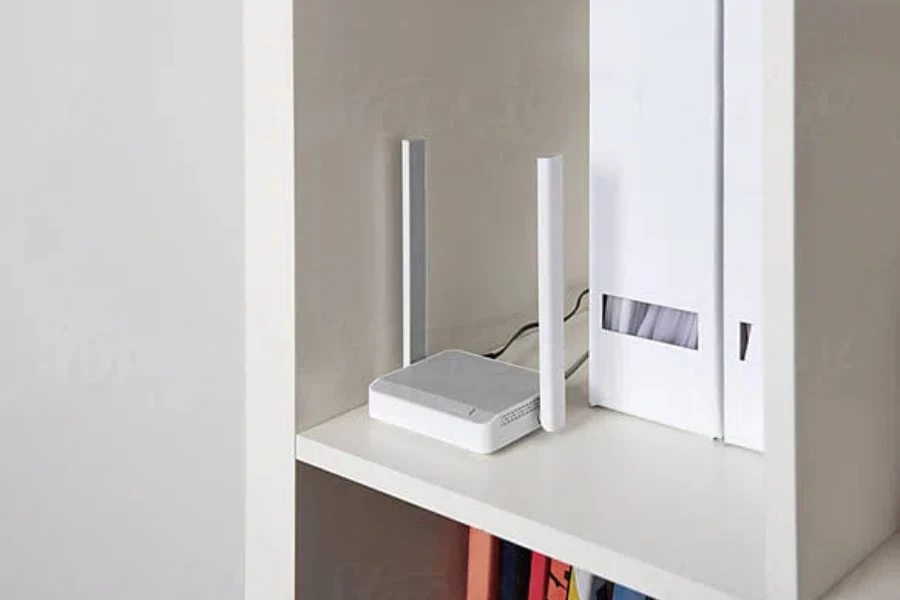For people that have to keep their fingertips on the pulse of the latest in technology, a high-speed internet connection is essential. Today, smartphones, tablets and networked computers all connect wirelessly. The latest technology in this field is WiFi 6 routers, which offer better connection speeds, a greater range and reliability. In this article, we’ll explain how WiFi 6 works, why you might want it and how to choose the right one for you.
Table of Contents:
– What is a WiFi 6 router?
– How does a WiFi 6 router work?
– Benefits and drawbacks of a WiFi 6 router
– How to choose a WiFi 6 router
– How to use a WiFi 6 router
What is a WiFi 6 router?

Get ready for WiFi 6. This newly available wireless networking technology, officially called 802.11ax, is the next iteration in the progression of more powerful, faster and usually better wireless data connections. It’s expected to be faster, more efficient, and more responsive to your devices than the previous incarnation, which is WiFi 5, also known as 802.11ac. A WiFi 6 router is the hub of a new wireless network that delivers the latest in superfast wireless Internet to a host of devices in your home or office and uses the latest technology to do it.
Unlike WiFi generations of old, a WiFi 6 router is designed to support more devices and support it better. Through technologies such as Orthogonal Frequency Division Multiple Access (OFDMA) and Multi-User, Multiple Input, Multiple Output (MU-MIMO), the router can communicate with multiple devices at a time, improving latency and bandwidth efficiency. This means that, whether you’re streaming 4K videos, gaming online, or working from home during the pandemic, a WiFi 6 router is built to support your modern lifestyle without a hitch.
Furthermore, WiFi 6 routers have security protocols that are more robust than previous generations, using, for example, WPA3 which helps to protect against hacking and keeps your time online in the clear. These developments point to WiFi 6 routers being the future of wireless networking, and ensure that wireless internet in today’s high-use world is reliable and up-to-date.
How does a WiFi 6 router work?

At its base, a WiFi 6 router will send and receive radio signals to and from connected devices via the 2.4 GHz and 5 GHz bands. The difference between a WiFi 6 router and other ones is that it uses advanced technologies to better optimise transmissions through these two bands. As a result of that, more data can travel through a communication channel in less time and with less errors. The most important of the optimisations WiFi 6 routers rely on is called OFDMA. OFDMA stands for ‘orthogonal frequency-division multiple access’. It basically involves taking a wireless channel and splitting it into numerous smaller frequency slots that will serve multiple devices at a time. By doing this, more devices can be connected to the network and they can all benefit from better individual performance, thanks to the lower time needed to wait before they can send or receive data.
Another key point is MU-MIMO, or Multiple User – Multiple Input Multiple Output, which means a WiFi 6 router can communicate with several devices at the same time, rather than only one at a time. This is useful in a house or office that has many devices so that each can get a fast connection without slowing the others. WiFi 6 routers also use Target Wake Time (TWT) to schedule communication with your devices. This means they can only talk to your smartphone, laptop or tablet at certain times, which helps to save battery power in your mobile devices.
On top of this, WiFi 6 routers feature higher Quadrature Amplitude Modulation (QAM), which produces a more complex and detailed data signal; this enables a greater number of bits to be packed into the same space, leading to potentially faster speeds overall. WiFi 6 routers are not just faster, in other words; they are also better at taking the load of a burgeoning human desire for connectivity in the home or workplace.
Benefits and drawbacks of a WiFi 6 router

WiFi 6 routers offer increased speed and capacity, with up to 9.6 Gbps compared to 3.5 Gbps for WiFi 5. Higher speed offers more headroom for a growing number of high-bandwidth applications and devices. A higher capacity also enables more device connections simultaneously, a feature many households or tech-oriented offices will benefit from.
Plus, routers conforming to WiFi 6 use frequency bands more efficiently, reducing latency (delays in connecting to another computer on the internet) and making online activity a smoother experience, whether you’re gaming, videoconferencing or using another ‘real-time’ application. The improved security features of WPA3 should also inspire some relief, especially in light of the rising number and sophistication of cybersecurity threats.
But the transition to WiFi 6 is not a seamless one and there are downsides. In order to get the full performance benefits of a WiFi 6 router, you need to have a device that supports the WiFi 6 standard. Some newer smartphones, laptops and other connected gadgets are beginning to include WiFi 6 compatibility, but many still do not, and most existing devices do not support WiFi 6. Furthermore, WiFi 6 routers are more expensive than older WiFi routers before it.
How to choose a WiFi 6 router

There are a handful of key features to look for. First, think about the size of your coverage area, as well as the materials in your home or office that can obstruct or reduce the strength of your wireless signals. Check for beamforming, which is a technology used by WiFi 6 routers that uses multiple antennas to extend coverage and route data through fewer walls.
Secondly, think about how many devices will connect to the router. If you have a lot of WiFi 6 phones, PCs, tablets or other internet-capable devices, or would like to add more in the future, look for a router that can handle all of them with Advanced MU-MIMO and OFDMA (if available).
Finally, consider what you’ll use the internet for. If you’re into online gaming or streaming 4K video, make sure your router has low latency and high throughput so your experience is as smooth as butter. The same goes for security features. If you work at home or handle sensitive information, choose a router with higher levels of security.
How to use a WiFi 6 router

As with Routers 1 through 5, setting up and using a WiFi 6 router is not markedly different. The same caveats apply: place it in the centre of your home – not against a wall or next to a big rolled-steel fridge; avoid placing it near reflecting glass; and make sure there’s nothing else between it and the locations you intend to use your devices. Be sure to use the latest firmware when you configure the router – the extra kernel patches and drivers included in upgrades are important for security as well as performance.
For homes or offices with a mixed population of WiFi 6 and legacy devices, consider setting up separate SSIDs so that the WiFi 6 devices can be used to their full potential without interference from legacy devices. And investigate the router settings for firmware features such as QoS (Quality of Service) that let you reserve bandwidth for critical applications or devices.
Lastly, after you’ve set this up, check in every so often to keep your network running and secure. Change passwords and settings as they’re necessary to stay secure, and your wireless network will stay in fine working shape. Properly set up and maintained, a WiFi 6 router can provide a solid, high-performance backbone for your digital life, able to handle any number of devices or digital applications.
Takeaway: A WiFi 6 router is a major advancement in wireless networking and represents the fastest, most technologically-advanced, scalable and efficient wireless route to date. A shift to WiFi 6 is not a small consideration, however the advantages of doing so makes the move worthwhile for those who wish to upgrade for a faster, more secure internet connection with increased capacity that futureproofs our connectivity. Understanding how it works, its advantages and disadvantages, and how to choose and use one can unlock the full potential of your internet connectivity and provide you with a powerful and secure internet connection at home.





 বাংলা
বাংলা Nederlands
Nederlands English
English Français
Français Deutsch
Deutsch हिन्दी
हिन्दी Bahasa Indonesia
Bahasa Indonesia Italiano
Italiano 日本語
日本語 한국어
한국어 Bahasa Melayu
Bahasa Melayu മലയാളം
മലയാളം پښتو
پښتو فارسی
فارسی Polski
Polski Português
Português Русский
Русский Español
Español Kiswahili
Kiswahili ไทย
ไทย Türkçe
Türkçe اردو
اردو Tiếng Việt
Tiếng Việt isiXhosa
isiXhosa Zulu
Zulu